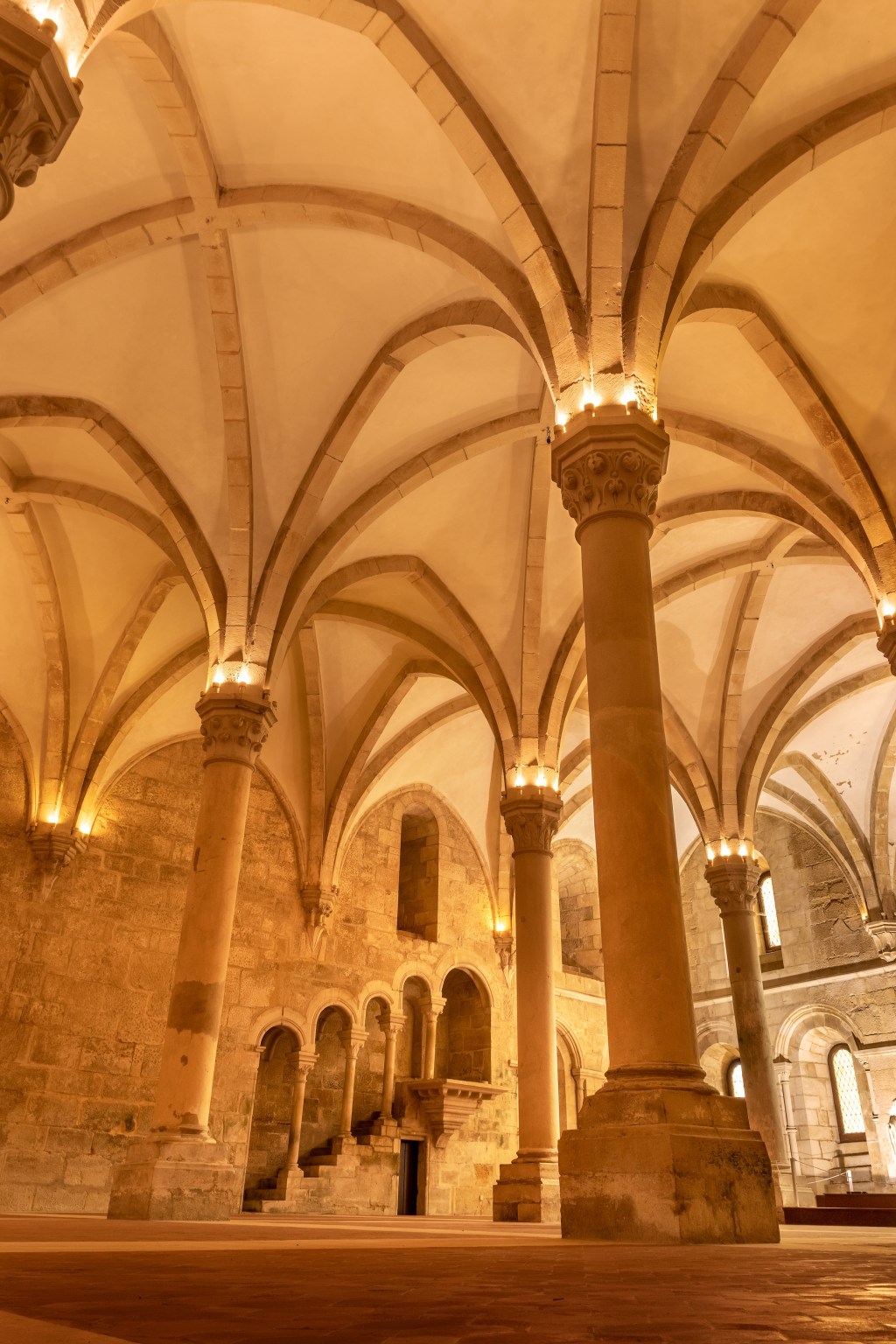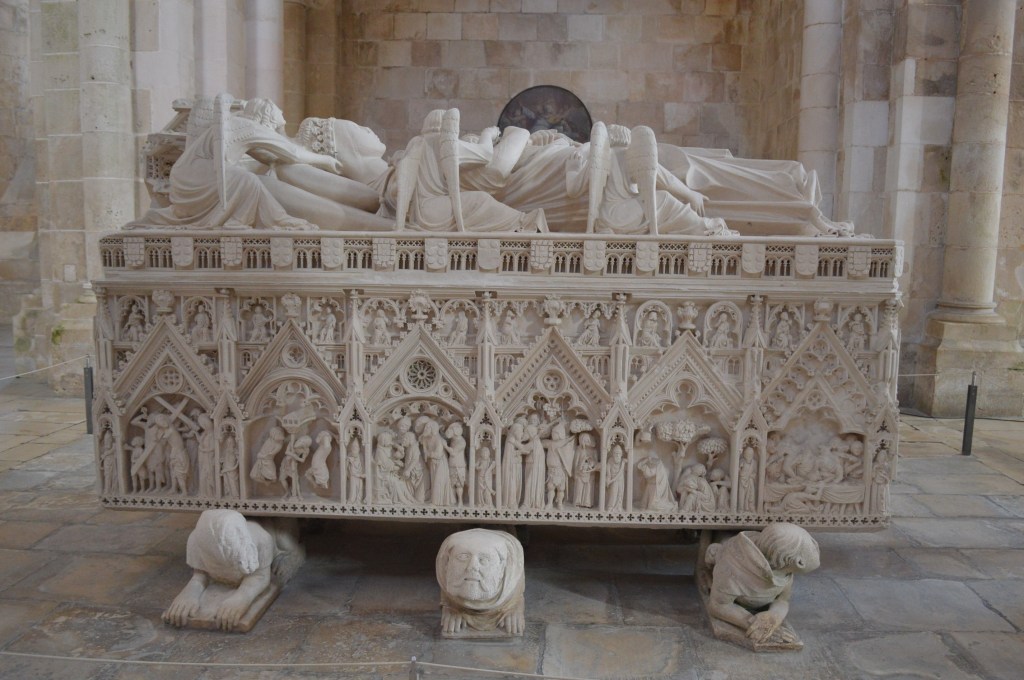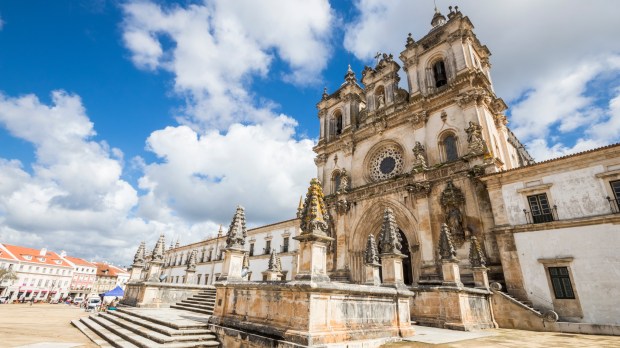The Alcobaça Monastery in central Portugal is a testament to the profound influence of the Cistercian Order on European Catholicism. Founded in 1153 by King Afonso I (the first Portuguese king) as a gesture of gratitude for a decisive military victory, Alcobaça flourished throughout the Middle Ages, becoming a center of learning, piety, and artistic achievement. Housing more than 1,000 monks in its prime, Alcobaça was the first Gothic building in Portugal.
The Cistercians, a reformed branch of Benedictine monasticism, emphasized austerity, prayer, and manual labor. This ethos is the cornerstone of the architecture of the monastery.
Built in a sober Gothic style, the Alcobaça church eschews elaborate ornamentation in favor of clean lines, soaring ribbed vaults, and expansive stained-glass windows. The effect is one of awe-inspiring simplicity, fostering a contemplative atmosphere naturally conducive to prayer – fit for the monks’ contemplative life.

Beyond the church, the Alcobaça complex encompasses a vast network of buildings, including a refectory, dormitories, chapter house, and scriptorium – a testament to the self-sufficient and industrious nature of Cistercian life. The scriptorium, in particular, played a crucial role in preserving and disseminating religious texts during a period of increasing literacy and theological inquiry.
The importance of Alcobaça goes beyond its architectural beauty. The monastery served as a powerful symbol of the emerging Portuguese kingdom, consolidating royal authority and promoting the Christianization of newly conquered territories – all the way to Japan.
The tombs of Portuguese royalty, including King Afonso II and Inés de Castro, enshrined within the monastery’s walls further cemented its status as a national landmark.

While the monastery’s influence waned after the 18th century, its enduring legacy remains. Designated a UNESCO World Heritage Site in 1989, Alcobaça continues to inspire. For Catholic pilgrims, it offers a glimpse into monastic austerity and artistic skill and serves as a powerful reminder of the values of simplicity, devotion, and the enduring pursuit of knowledge.



